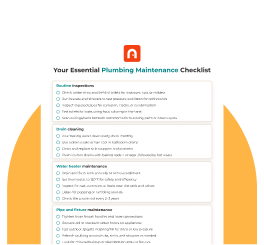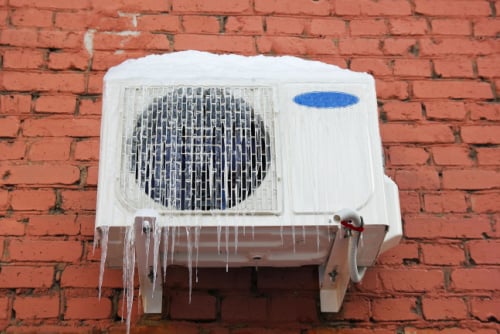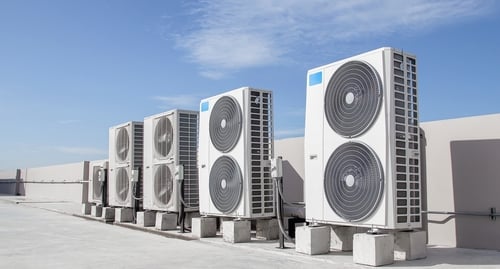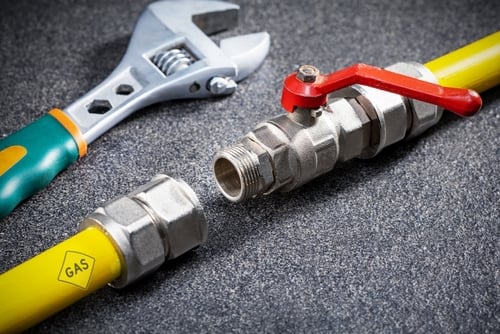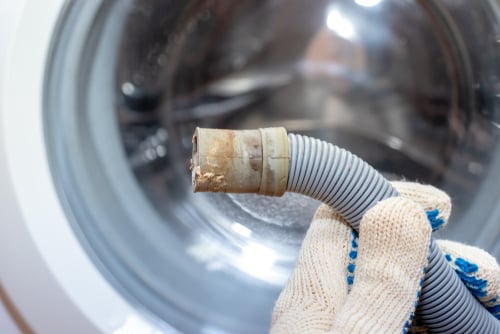We’re all grateful for modern plumbing. But because it runs quietly behind the scenes, it’s easy to go years without really understanding how it all works. We’re here to change that with a complete guide to plumbing basics, from P-traps to pressure valves.
So, how does plumbing work? And what’s the best way to maintain it? Proactive plumbing upkeep can prevent costly repairs, help you avoid water damage, and significantly extend the lifespan of your home plumbing system. But knowing where to start is half the battle.
Consider this your Plumbing 101 lesson, helping you build confidence maintaining the systems that keep your home running.
Why residential plumbing maintenance matters
When it comes to your household plumbing, out of sight may mean out of mind. If you don’t think about your home plumbing system until an issue crops up, you’re not alone. But caring for your pipes is an essential part of any home maintenance routine.
Neglected plumbing issues can escalate quickly, and it only takes one small, insignificant leak to see extensive water damage over time. According to the Environmental Protection Agency (EPA), household leaks can waste nearly 10,000 gallons of water annually, and about 10% of homes have leaks that waste 90 gallons or more per day.
Avoiding leaks through residential plumbing maintenance helps your household:
- Conserve water and save about 10% on water bills
- Prevent costly repairs
- Protect your home from water damage, like mold growth or structural issues, that may also represent health hazards
- Extend the lifespan of your home plumbing system, avoiding premature replacements
Plumbing basics
In order to preserve your pipes (as well as identify problems) it’s good to know a little bit more about the system. How does plumbing actually work? Let’s dive into plumbing 101.
Water supply system
The water supply system brings fresh water into your home under pressure, allowing it to flow through pipes to fixtures like sinks, showers, and appliances. This system can source water from municipal supplies or private wells.
Drainage system
Once water has been used, the drainage system carries wastewater away from your home. It relies on gravity to move water through drainpipes to the sewer or septic system. Key components include traps, which prevent sewer gases from entering the home, and vent pipes, which maintain proper air pressure.
Fixtures and appliances
Fixtures like toilets, sinks, and bathtubs, along with appliances such as dishwashers and washing machines, are integral parts of your home plumbing system. Each connects to both the water supply and drainage systems, requiring proper installation and maintenance to function correctly.
Additional reading:
What Is A Plumbing Ventilation Pipe
How To Remove and Replace a Toilet
How to Replace Toilet Handle

Your essential residential plumbing maintenance checklist
Stay ahead of leaks, clogs, and cold showers. This is your checklist of plumbing maintenance basics, to keep things running smoothly all year long.
Routine inspections
The water supply system brings fresh water into your home under pressure, allowing it to flow through pipes to fixtures like sinks, showers, and appliances. This system can source water from municipal supplies or private wells.
-
1
Routine inspections
Mastering the plumbing basics means learning to get up close and personal with your system. A quick monthly once-over of your plumbing fixtures and pipes can catch problems before they become expensive repairs.
1. Look under sinks and behind toilets for any signs of moisture, rust, or mildew.
2. Run all faucets and showerheads to test for steady pressure, odd sounds, or spurting. Whistling or rattling may mean air in the line or mineral buildup.
3. Inspect exposed pipes in basements, crawlspaces, or utility rooms for corrosion, cracks, or condensation.
4. Test toilets for leaks by adding food coloring to the tank—if the bowl changes color after 30 minutes, you’ve got a slow leak.
5. Scan ceilings and walls beneath bathrooms for any bubbling paint, sagging, or brown spots. These are often early signs of hidden leaks.
-
2
Drain Cleaning
Slow drains and backups are annoying. But they can also be red flags that something is clogging your household plumbing. Skip the harsh chemical cleaners (they can corrode your pipes) and stick to these safe, effective maintenance steps.
1. Pour a kettle of boiling water down every drain once a month to dissolve buildup from soap, grease, and debris.
2. Use a drain snake or hair remover tool in bathroom drains to remove gunk before it becomes a full blockage.
3. Clean sink stoppers and strainers—just pull them out, rinse off hair and grime, and replace.
4. Flush kitchen drains with a mixture of ½ cup baking soda and ½ cup white vinegar. Let it sit for 10–15 minutes, then follow with hot water.
5. Avoid dumping grease, pasta, rice, or coffee grounds down the kitchen sink. Dispose of these in the trash or compost instead by pouring these into an aluminum foiled lined mixing bowl, then discarding in the garbage.
-
3
Water heater maintenance
Your water heater works hard behind the scenes, so a little annual maintenance goes a long way. A poorly maintained unit can become less efficient over time— and an unexpected breakdown means an unexpected day without hot water.
1. Drain and flush the tank at least once a year to remove sediment that can reduce heating efficiency and clog your system.
2. Set the thermostat to 120°F. That’s the temp hot enough for comfort and sanitation, but helps prevent scalding and reduces energy bills.
3. Inspect for rust, corrosion, or leaks around the tank and pipe fittings, especially near the pressure relief valve.
4. Listen for odd noises like popping, rumbling, or banging—signs that sediment may be overheating and hardening inside the tank.
-
4
Pipe and fixture maintenance
Small issues in pipes and fixtures (like being overly noisy) can snowball into costly damage or water waste. Make it a habit to do these checks a few times a year.
1. Tighten loose faucet handles, supply valves, or hose connections to avoid leaks and unnecessary wear.
2. Inspect rubber hoses on dishwashers and washing machines. Replace any that are cracked, bulging, or older than five years.
3. Test outdoor spigots and irrigation systems in spring and fall. Watch for drips, pressure drops, or leaks around hose bibs.
4. Examine and refresh plumber’s caulking around bathtubs, showers, and sinks if it’s cracked or moldy. This protects from water seepage into walls and flooring.
5. Look for mineral deposits or discoloration around faucets and showerheads, which can signal hard water buildup or slow leaks.
-
5
Sump pump and sewage system care
Your sump pump is your first line of defense against a flooded basement, especially during storms or spring thaws. Meanwhile, your sewer line keeps wastewater flowing away from your home. A little upkeep goes a long way toward avoiding messy (and very expensive) backups.
1. Test your sump pump quarterly by pouring a bucket of water into the sump pit. It should kick on immediately and pump out the water.
2. Clear debris from the pump grate and pit, especially after heavy rain or snowmelt.
3. Ensure the sump pump discharge pipe is sloping away from your foundation—ideally at least 10 feet.
4. Avoid flushing wipes, feminine hygiene products, and thick paper towels. Even “flushable” items can clog sewer lines.
5. Schedule a professional sewer line inspection every 2–3 years (or annually if you have large trees nearby whose roots can intrude into pipes).
Additional reading:
How to Unclog a Garbage Disposal
How to Fix a Leaky Garbage Disposal
DIY Bathtub and Shower Repair Tips
Early signs of trouble for your residential plumbing
Plumbing problems rarely show up all at once. More often, they whisper before they shout—through slow drains, rising water bills, or strange smells. If you notice anything you’re unsure about, trust your gut. That’s the time to video chat a Frontdoor Plumbing Expert for help assessing or fixing the problem.
Here’s what to look (and listen) for:
- Slow-draining sinks, tubs, or showers: This can mean a clog is forming somewhere in the drain line.
- Unusual sounds in your pipes: Banging, gurgling, or whistling could point to air in the lines, water pressure issues, or pipe obstructions.
- Spikes in your water bill: A sudden jump could indicate a hidden leak, and even a small one can waste hundreds of gallons per month.
- Water stains or bubbling paint on walls or ceilings: These can signal a pipe is leaking behind the surface, especially in bathrooms or kitchens.
- Musty smells or unexplained dampness: Persistent odors often point to hidden moisture or mold caused by a slow leak.
- Discolored water or rust flecks: Brown or yellowish water can be a sign of pipe corrosion or sediment in your water heater.
- Low water pressure in one or more fixtures: This could mean a buildup in the faucet aerator—or something more serious in your pipes.
Additional reading:
Why Is My Hot Water Brown?
Common Reasons for a Leaky Faucet
Plumbing problems don’t wait. Here’s how Frontdoor® can help.
Home plumbing issues don’t stick to a schedule. When a pipe bursts, a toilet won’t stop running, or you suddenly find yourself ankle-deep in water, you need backup you can trust.
With the Frontdoor app, you can connect to a Plumbing Expert over video chat. You’ll get clear, calm guidance in real time, whether it’s a quick fix or a “do I need someone to come in for this?” moment. And if you do? We can help you book a trusted local Pro to take it from there. Become a Frontdoor member today to get started.
Frequently asked questions
Your basic plumbing questions, answered.
How do I diagnose my plumbing problems?
The best way to check for plumbing issues is by doing a visual inspection or performing a pressure test. A Frontdoor Plumbing Expert can help assess the issue over video chat if you’re unsure.
How do I know if my water pipes are bad?
To check for faulty water pipes, look for visible leakage, consistently discolored water, and poor pressure throughout the home.
What are the most common problems in plumbing systems?
The most common plumbing issues are poor drainage, low water pressure, continuously running toilets, and slow-to-fill tanks.
What types of regular maintenance and inspections are needed on my plumbing system?
Here are a few common plumbing maintenance tasks worth performing regularly: water heater flush, bi-annual septic inspection, visual inspection for leaks, brine level in softener system, drain system function, and annual winterization where necessary.
Was this article helpful?

